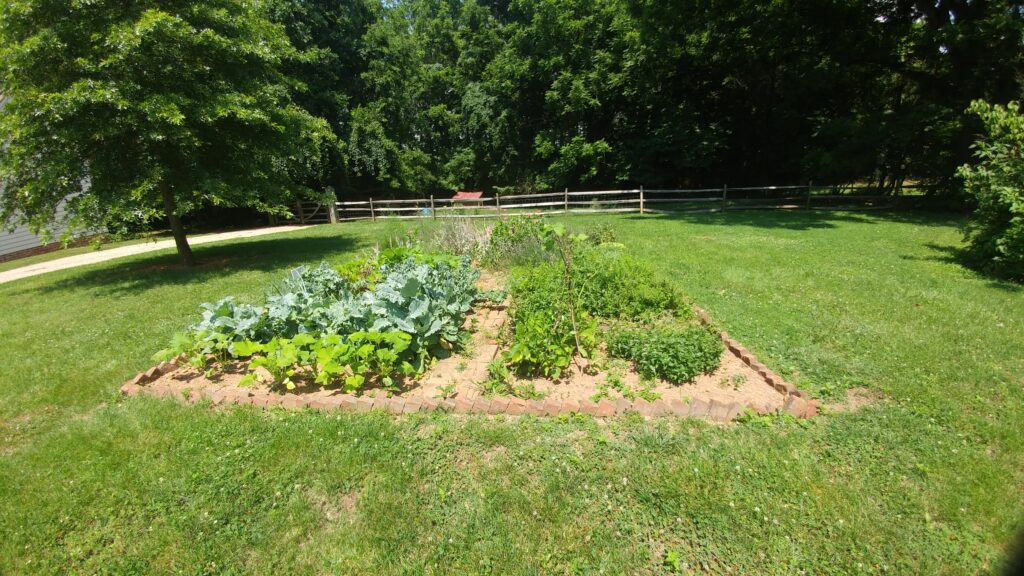Benefits of a Kitchen Garden
A kitchen garden offers more than just fresh food—it provides a range of benefits that can enhance your lifestyle. Growing your own produce ensures access to fresh, nutrient-rich vegetables and herbs, enhancing the flavor and quality of your meals. It can also lead to significant cost savings by reducing grocery expenses, as homegrown food is often more affordable than store-bought alternatives.
Beyond financial benefits, a kitchen garden contributes to environmental sustainability by lowering your carbon footprint through local food production and eco-friendly gardening practices. Additionally, tending to a garden provides physical exercise and a therapeutic way to reduce stress, promoting both mental and physical well-being.
Preparation
Before you start planting, it’s important to lay a solid foundation for your kitchen garden. Proper planning ensures that your garden is both productive and easy to maintain. By selecting the right location, designing an efficient layout, and preparing the soil properly, you set yourself up for a thriving and beautiful garden.
-
Choose the Right Location: Select a spot that receives at least 6-8 hours of sunlight daily. Good drainage is essential, so avoid areas where water tends to pool. Proximity to your kitchen is also important for convenience.
-
Decide on the Layout: Consider raised beds or containers if you have limited space or poor soil quality. Raised beds can improve drainage and soil quality, making it easier to manage your garden.
-
Soil Preparation: Healthy soil is the foundation of a productive garden. Test your soil to determine its pH and nutrient levels. Amend the soil with compost or organic matter to improve its structure and fertility.
Selecting Plants
Choosing the right plants for your kitchen garden is key to maximizing both yield and enjoyment. Start by focusing on vegetables, herbs, and fruits that you and your family regularly eat, such as tomatoes, peppers, lettuce, basil, and strawberries. Consider your local climate, as certain plants thrive in specific temperature ranges and soil conditions.
If you live in a region with hot summers, heat-tolerant plants like eggplant and okra may perform well, while cooler climates are better suited for crops like kale and broccoli. Space is another important factor—compact or dwarf varieties of plants are ideal for small gardens or container gardening, while sprawling crops like pumpkins and melons need plenty of room to grow.
Companion planting can further enhance plant health and productivity by pairing plants that benefit one another. For example, basil repels pests that commonly attack tomatoes, while marigolds help deter nematodes that could harm vegetable roots. Carrots and onions grow well together because onions help repel carrot flies, and beans can improve soil fertility by fixing nitrogen, benefiting nearby leafy greens. Additionally, rotating crops each season can prevent soil depletion and reduce the risk of plant diseases that linger in the soil.
Seasonal planting is also essential for a continuous and productive garden. Cool-season crops like lettuce, spinach, and radishes can be planted in early spring and again in the fall, while warm-season crops such as tomatoes, peppers, and cucumbers should be planted after the last frost to ensure optimal growth. Staggering your plantings by sowing seeds in intervals, known as succession planting, can help extend your harvest, ensuring a steady supply of fresh produce rather than an overwhelming abundance all at once.
You can create a thriving, productive, and sustainable kitchen garden by selecting the right plants, utilizing companion planting strategies, and planning for the seasons.
Planting and Maintenance
Once you’ve planned your kitchen garden and selected your plants, proper planting and ongoing care will ensure a productive and healthy garden. Understanding the best techniques for starting seeds, watering, pest control, and harvesting will help you make the most of your space.
-
Starting Seeds: Some plants can be started indoors from seeds and transplanted later, while others can be sown directly into the garden. Follow guidelines for each plant type to ensure successful germination and growth.
-
Watering: Consistent watering is crucial, especially during dry spells. Water your garden in the early morning to reduce evaporation and prevent diseases.
-
Pest and Disease Management: Monitor your plants regularly for signs of pests and diseases. Use organic methods such as neem oil or insecticidal soap to manage pests. Encourage beneficial insects like ladybugs and bees to help control pest populations.
-
Harvesting: Harvest your produce at its peak ripeness for the best flavor and nutritional value. Regular harvesting can also encourage plants to produce more.
A kitchen garden, or potager, is a practical and beautiful way to grow fresh vegetables, herbs, and fruits right outside your kitchen door. By carefully planning your garden’s location, layout, and soil quality, you can create a productive space that fits your needs. Selecting the right plants—those that your family enjoys eating and that thrive in your climate—ensures a bountiful harvest. Companion planting and seasonal gardening techniques can further enhance plant health and yield.
Proper planting and maintenance are key to keeping your kitchen garden thriving. Starting seeds correctly, watering consistently, and managing pests with organic methods help ensure strong, healthy plants. Regular harvesting encourages continued production and provides fresh, flavorful produce for your meals.
Beyond the practical benefits, a kitchen garden can reduce grocery costs, lessen your environmental impact, and promote physical and mental well-being. By following these guidelines and utilizing state extension resources, you can cultivate a thriving and rewarding kitchen garden.
Come visit our Horticultural Learning Center or Scotchtown demo garden to learn about different planting methods and what we plant in our kitchen gardens. We aim to provide lots of inspiration.
Sources
- Virginia Cooperative Extension
- Penn State Extension
- Mississippi State University Extension Service


